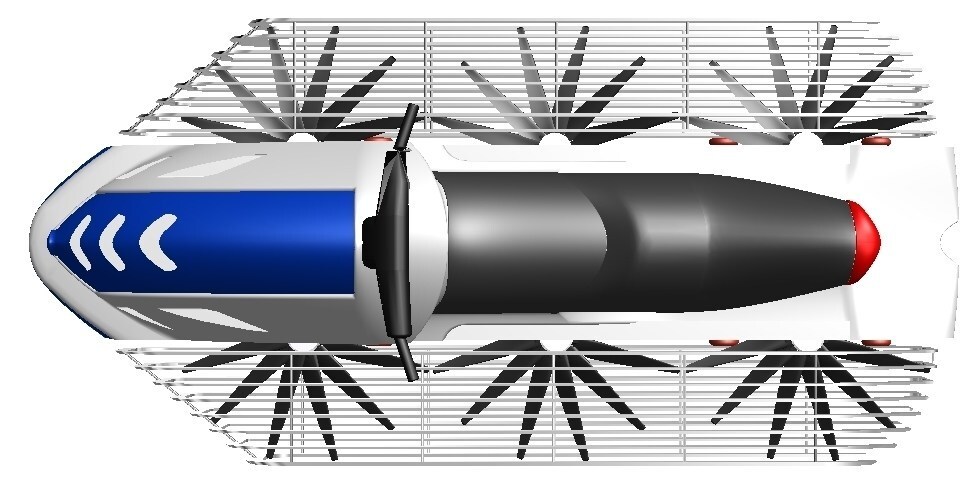Horizon Aeronautics has prototyped an eVTOL hovercycle concept that uses a complex and interesting split-swashplate “Blainjett” variable pitch rotor system that only exposes half of each fan.
Each blade can alter its pitch independently. With the swashplate sitting flat, pushing the whole thing up and down will change the pitch of all the blades at once.
Helicopter pilots can tilt the swashplate with cyclic control. The result is an asymmetry in the lift. The cyclic control can do this in any direction; it’s part of what makes helicopters such dynamic aircraft.
Blainjett calls its innovation “dynamic variable pitch,” and what it effectively does is split the swashplate so that it operates in two halves. The swashplate still tilts as per normal in response to cyclic inputs, but this system lets you additionally push half of the swashplate higher or lower than the other half. A flexible cam made from flex-steel and two linkages let the pitch controls move smoothly between the two levels as they rotate.

Initially, the Blainjett system was designed to counter retreating blade stalls. As a helicopter accelerates forward, an asymmetry of lift develops. As the top rotor blades spin around, they go toward the front of the aircraft on one side, and backward on the other. At high speeds, this means the blades develop extra lift as they’re going forward into the fast-moving airstream, and less lift as they’re retreating backward with the airstream, and the result is asymmetry of lift, which leads to a speed limit beyond which the aircraft will tip over and plummet.
Helicopters could theoretically balance out lift asymmetry more effectively and raise their maximum speed.
Blainjett says, “Data from our proof-of-concept prototype showed a significant improvement of 75 percent, with a 125 percent improvement projected in future testing,” although it’s unclear exactly what was improved by 75 percent.
Horizon aims to build an eVTOL aircraft about the size of a jet ski. It would weigh about 380 kg (838 lb), it’d have a roughly 9 x 4-ft (3.58 x 1.270m) footprint, and it would be capable of seating one to three humans.
Airflow through the hoverbike’s side skirts would only allow the use of small-diameter ducted fans. Enter Blainjett’s dynamic variable pitch system. The hoverbike is now configured using three large rotors in a line down each side of the bike. So, they’re designed such that only half of each blade is exposed, with the other half disappearing under the bodywork.

“Horizon Aeronautics has real space and power constraints,” explains Blainjett president Cary Zachary. “When we realized that we could nest the lift rotors in a certain way that maximizes space available and combine their placement with our vectored thrust concept, we knew we had something unique.”
“It turned out when we compared our thrust output and efficiency to ducted fans and smaller rotors we were two-three times more efficient with two-three times more power density while fitting in the same available space,” says Zachary. “There’s also a reduction in aerodynamic drag in forwarding flight.”
Blainjett says the company is working on a fully functional prototype that should be ready for testing later this year.


